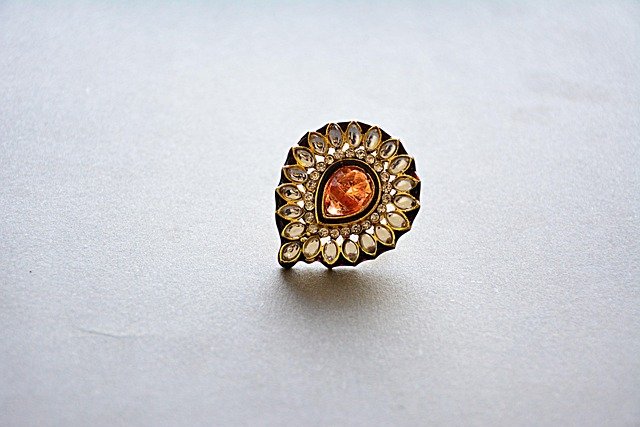Read tips for Victorian engagement ring styles
Victorian engagement rings represent one of the most romantic and intricate periods in jewelry history, spanning from 1837 to 1901 during Queen Victoria's reign. These ornate pieces feature distinctive characteristics that set them apart from modern designs, including elaborate metalwork, meaningful symbolism, and unique gemstone arrangements. Understanding the nuances of Victorian ring styles can help you appreciate their timeless appeal and make informed decisions when selecting or styling these historical treasures.

Victorian engagement rings emerged during a transformative era in jewelry craftsmanship, reflecting the romantic sensibilities and technological advances of the 19th century. These rings tell stories through their intricate details, from hidden compartments containing locks of hair to elaborate engravings that conveyed secret messages between lovers.
Discover the Elegance of Victorian Designs
Victorian ring designs evolved through three distinct periods, each with its own aesthetic characteristics. The Early Victorian period (1837-1860) emphasized romantic motifs like hearts, flowers, and serpents, often crafted in yellow gold with colorful gemstones. The Mid-Victorian period (1860-1885) reflected mourning jewelry trends following Prince Albert’s death, featuring darker materials like jet and onyx alongside traditional diamonds. The Late Victorian period (1885-1901) saw a return to lighter themes with increased use of diamonds and platinum, incorporating Art Nouveau influences.
The craftsmanship of Victorian rings showcased exceptional attention to detail, with hand-engraved patterns, milgrain edges, and intricate filigree work. Rose-cut diamonds were particularly popular, offering a softer sparkle compared to modern brilliant cuts. These designs often featured multiple stones arranged in clusters or geometric patterns, creating visual interest through varied textures and heights.
Uncover the History Behind Each Motif
Symbolism played a crucial role in Victorian jewelry design, with each element carrying specific meanings understood by the wearer and their social circle. Snake motifs represented eternal love and wisdom, popularized when Prince Albert proposed to Queen Victoria with a serpent ring. Floral designs conveyed different messages depending on the flower: roses symbolized love, forget-me-nots represented true love and remembrance, and ivy indicated fidelity.
Acrostic jewelry became increasingly popular, where the first letters of gemstone names spelled out words like “REGARD” (Ruby, Emerald, Garnet, Amethyst, Ruby, Diamond) or “DEAREST” (Diamond, Emerald, Amethyst, Ruby, Emerald, Sapphire, Topaz). These hidden messages allowed couples to express sentiments that social conventions might have prevented them from speaking aloud.
Explore Materials That Define Timeless Beauty
Victorian rings utilized a diverse palette of materials that reflected both availability and symbolic meaning. Yellow gold dominated the early period, often combined with rose gold for contrast and visual warmth. Silver and later platinum provided settings for diamonds and lighter-colored stones, creating elegant backdrops that enhanced gemstone brilliance.
Gemstone choices extended far beyond diamonds to include sapphires, rubies, emeralds, and semi-precious stones like garnets, amethysts, and turquoise. Pearls held special significance as symbols of purity and were often incorporated into engagement ring designs. The Victorian era also saw increased use of alternative materials like carved coral, jet, and even hair jewelry, reflecting the period’s fascination with sentimentality and remembrance.
Get Styling Tips for Modern Wear
Incorporating Victorian engagement rings into contemporary wardrobes requires understanding how to balance their ornate nature with modern aesthetics. These rings pair beautifully with vintage-inspired clothing, complementing lace details, high necklines, and flowing fabrics that echo the romantic sensibilities of the era. For everyday wear, Victorian rings work well with neutral colors and classic silhouettes that don’t compete with the ring’s intricate details.
Layering Victorian rings with simpler bands can create interesting contrasts while protecting the antique piece from daily wear. Consider wearing a Victorian ring on the right hand while reserving the left ring finger for a more practical daily band. When styling for special occasions, allow the Victorian ring to be the focal point by keeping other jewelry minimal and complementary.
Embrace Romance with Every Piece
The romantic appeal of Victorian engagement rings lies in their ability to connect wearers with a bygone era of courtship rituals and emotional expression. These rings embody the Victorian belief that jewelry should tell a story and convey deep personal meaning. The elaborate craftsmanship and symbolic elements create pieces that feel both precious and deeply personal.
Modern couples drawn to Victorian styles often appreciate the uniqueness and historical significance these rings provide. Unlike contemporary mass-produced designs, Victorian rings offer individuality and character that reflects the hand-crafted nature of their creation. The patina and gentle wear marks that develop over time add to their charm, creating pieces that truly embody the concept of heirloom jewelry.
| Ring Style | Era | Price Range | Key Features |
|---|---|---|---|
| Early Victorian Cluster | 1837-1860 | $2,000-$8,000 | Yellow gold, colorful gemstones, romantic motifs |
| Mid-Victorian Mourning | 1860-1885 | $1,500-$6,000 | Dark materials, jet accents, memorial elements |
| Late Victorian Diamond | 1885-1901 | $3,000-$12,000 | Rose-cut diamonds, platinum settings, Art Nouveau influence |
Prices, rates, or cost estimates mentioned in this article are based on the latest available information but may change over time. Independent research is advised before making financial decisions.
Victorian engagement rings continue to captivate jewelry enthusiasts with their combination of historical significance, romantic symbolism, and exceptional craftsmanship. Whether you’re drawn to the elaborate goldwork of the early period, the meaningful motifs of the mourning era, or the diamond brilliance of the late Victorian years, these rings offer timeless beauty that transcends fashion trends. Understanding their historical context and styling possibilities ensures that these precious pieces can be appreciated and enjoyed for generations to come.


